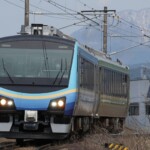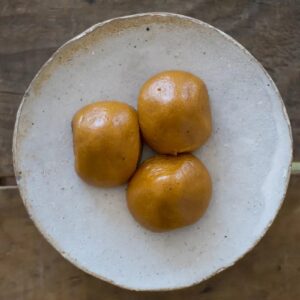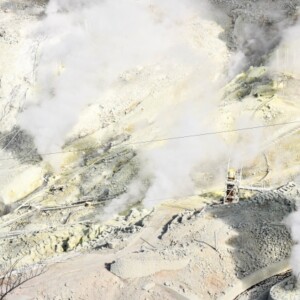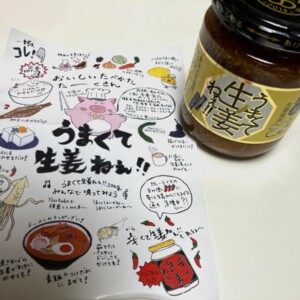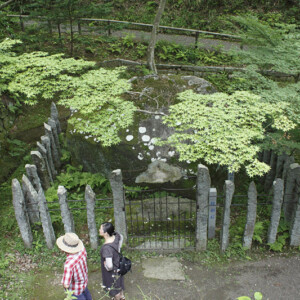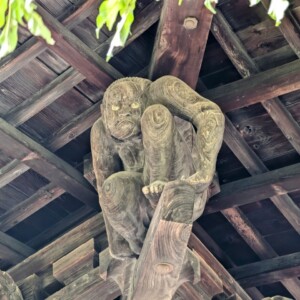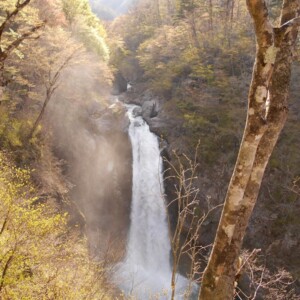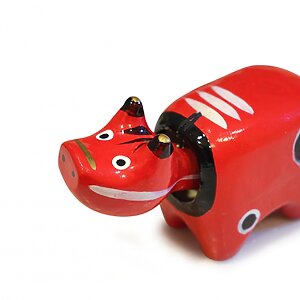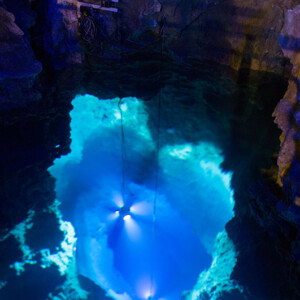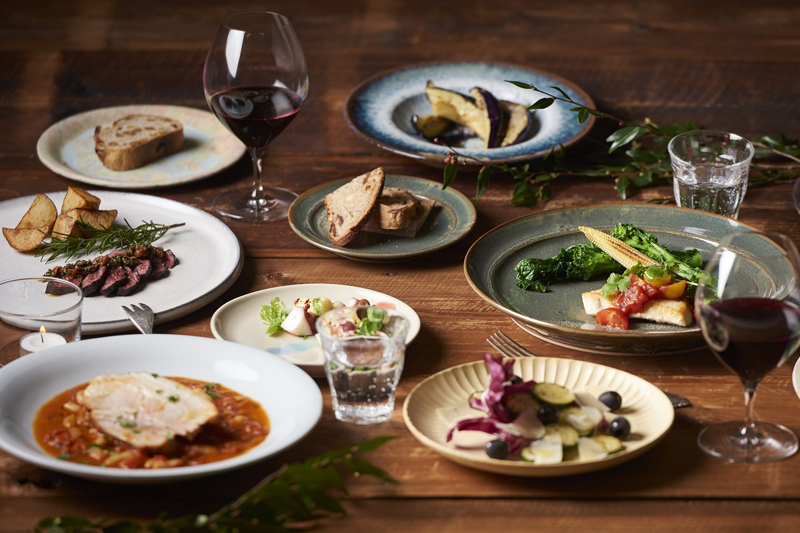
It has been loved by many for 400 years. Aizu ceramic "Aizu Hongo ware" [Fukushima Prefecture]
table of contents
- 1 It began at the end of the Sengoku period when feudal lords invited tile craftsmen.
- 2 Ceramic making began in earnest in the Edo period
- 3 Ceramic Sou Festival held every year at Joshoji Temple
- 4 "Aizu Hongo ware" has survived many crises such as wars, fires, and earthquakes.
- 5 The insulator production that saved Aizu Hongo ware is still a major industry in Aizumisato Town.
- 6 The historic climbing kiln that collapsed in the Great East Japan Earthquake has been revived.
- 7 “Aizu Hongo Setoichi” is a ceramic market on Setomachi Street that retains the atmosphere of the past.
- 8 Make your own ceramics with “Aizu Hongo-yaki”
``Aizu Hongo-yaki'' is a pottery with a 400-year history produced in Hongo, Aizumisato-cho, near Aizuwakamatsu City, Fukushima Prefecture.
Its unique feature is that both pottery and porcelain are fired, and the reason for this is that high-quality clay for pottery and stone for porcelain called Okubo pottery stone are produced from the surrounding area.

There are 12 potteries producing "Aizu Hongo Yaki" (as of 2022), and each brewery produces unique works that range from everyday pottery to luxurious white porcelain that allows a little light to pass through. is also popular.
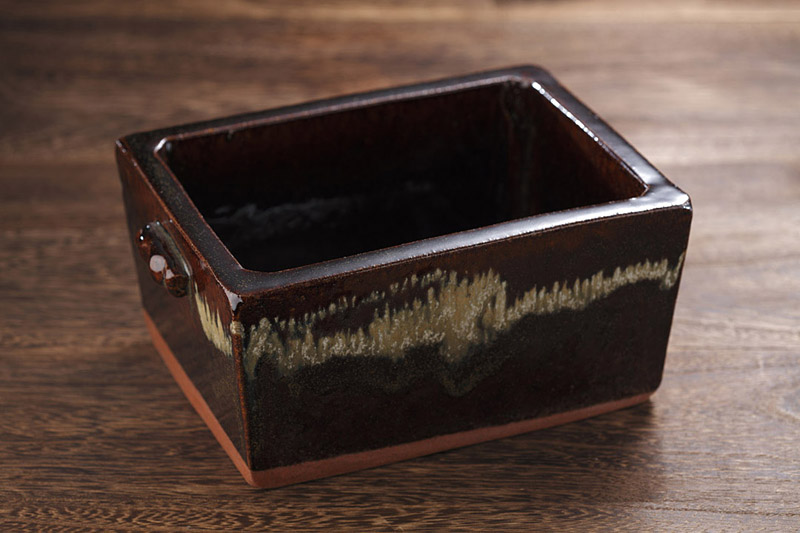
It began at the end of the Sengoku period when feudal lords invited tile craftsmen.
Aizu Hongo ware has a long history, about 400 years ago when Ujisato Gamo, the lord of Aizuwakamatsu, invited craftsmen from Harima Province (Hyogo Prefecture) to renovate his castle. It is said that it began when tiles were fired. The year was 1593, during the Azuchi-Momoyama period (Sengoku period). At this time, pottery such as pottery was not yet made.
Ceramic making began in earnest in the Edo period
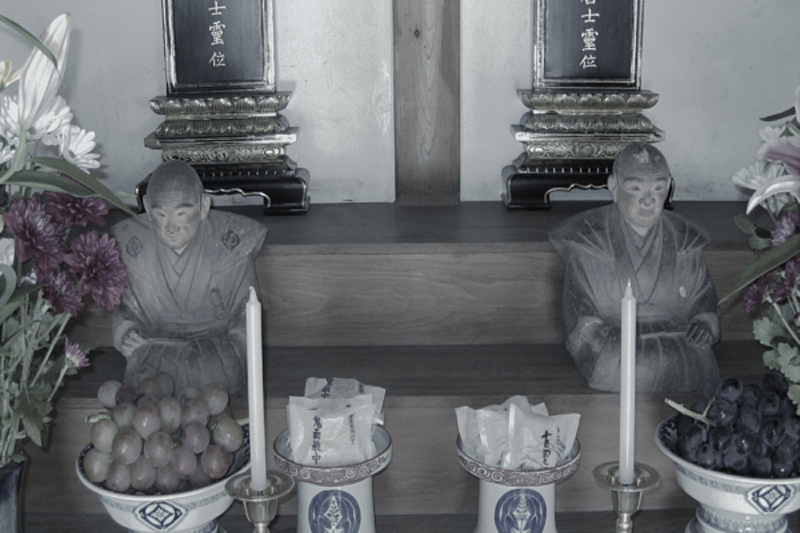
It was during the Edo period that practical pottery such as vessels, plates, and bowls began to be made. This was after they invited Genzaemon Mizuno, a potter from Kuni (Southern Gifu Prefecture) (many accounts say he was from Seto (Owari Province = Aichi Prefecture)). Genzaemon opened a kiln and began making pottery in 1647. For this reason, Genzaemon Mizuno is said to be the ``father of Aizu Hongo ware.''
In the mid-Edo period (1800s), pottery stone (Okubo pottery stone), the raw material for porcelain, was discovered in Hongo, and porcelain production began. The Aizu clan sent a potter named Iemon Sato to Arita (Arita Town, Saga Prefecture, famous for Arita ware) to learn the techniques of making porcelain. When Iemon returned, having mastered difficult techniques, the clan built a climbing kiln, and porcelain production in Hongo began. Iemon Sato is called the "father of Aizu Hongo ware."
Ceramic Sou Festival held every year at Joshoji Temple
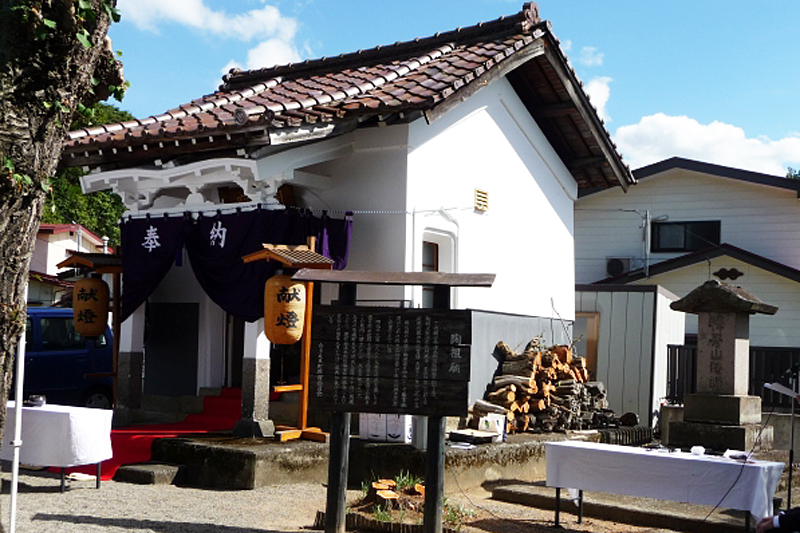
The memorial tablets of Genzaemon Mizuno, the founder of pottery, Iemon Sato, the founder of porcelain, and Koemon Teshirogi, a disciple of Iemon who perfected white porcelain. The bust is enshrined in the Toso-byo shrine of Josho-ji Temple in Hongo area. At the same time, more than 20 people who have made significant contributions to ceramics are enshrined here, and once a year on September 16th, the ``Ceramic Founder Festival'' is held.
Josho-ji Temple (Spotter Festival) <Information>
- Facility name: Joshoji Temple (Torcerer Festival)
- Address: 3110 Hongokami, Aizumisato-cho, Onuma-gun, Fukushima Prefecture
- Phone number: 0256-56-3007 (Aizu Hongo Ware Business Cooperative Association)
Google Map
"Aizu Hongo ware" has survived many crises such as wars, fires, and earthquakes.
``Aizu Hongo ware'' is said to be the oldest pottery in Tohoku, but it is the only production area north of Kanto for porcelain. During the Edo period, many potteries were lined up and the area was bustling with people.
However, during the Boshin War (1868-1869) that broke out between the end of the Edo period and the beginning of the Meiji period, Aizuwakamatsu was completely destroyed by the new government forces. Hongo, which is close to Aizuwakamatsu, was also severely damaged, and the very survival of ``Aizu Hongo Ware'' was in jeopardy.
A major turning point occurred in 1890. At the ``3rd National Industrial Exhibition,'' a national exhibition held in Ueno, Tokyo, in that year, more than half of the works awarded as progress awards were made by Aizu Hongo ware craftsmen, and ``Aizu Hongo ware'' The name quickly became known. Since then, as its reputation has increased, exports to other countries have also increased, and at one point there were more than 100 potteries.
The insulator production that saved Aizu Hongo ware is still a major industry in Aizumisato Town.

However, in 1916, a great fire struck Hongo. Most of the pottery was destroyed in a fire, and reconstruction continued at a slow pace until the end of World War II (1939-1945). Although the post-war recovery was by no means quick, the production of porcelain insulators, or insulators, was the catalyst for the revival of Aizu Hongo ware. Insulators are essential to restoring power to cities such as Tokyo and Yokohama, which have been devastated by the fires. There are only a limited number of porcelain production areas that can produce insulators, and large orders came to Hongo.
The historic climbing kiln that collapsed in the Great East Japan Earthquake has been revived.
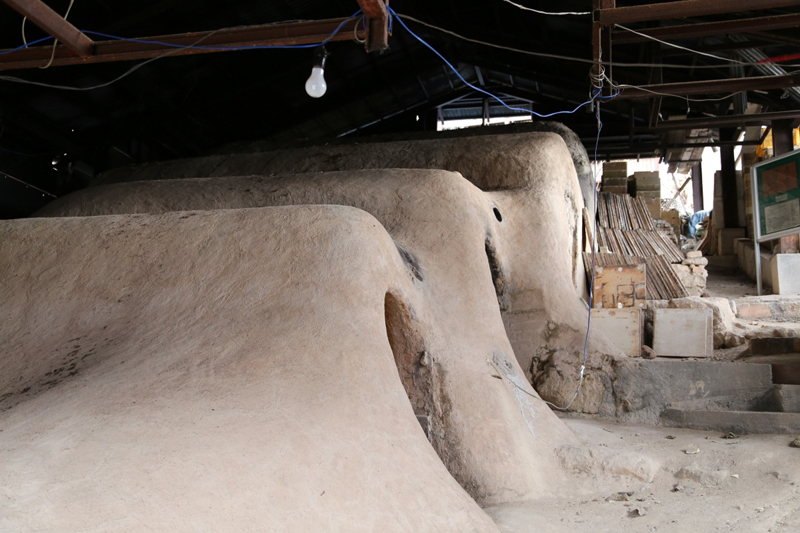
The oldest kiln for Aizu Hongo ware is the Munakata kiln. It began in 767 when a priest from Munakata Taisha Shrine (Munakata City, Fukuoka Prefecture) moved to Hongo for missionary work and founded Munakata Shrine. Approximately 950 years later, in 1719, the first generation, who were priests, began making pottery while still being priests, and 100 years later, they specialized in making pottery. The climbing kiln, which had been in use since the Edo period, collapsed in the Great East Japan Earthquake in 2011, but was restored to its original size in 2013. Noborigama is a designated cultural property of Aizumisato Town.
“Aizu Hongo Setoichi” is a ceramic market on Setomachi Street that retains the atmosphere of the past.
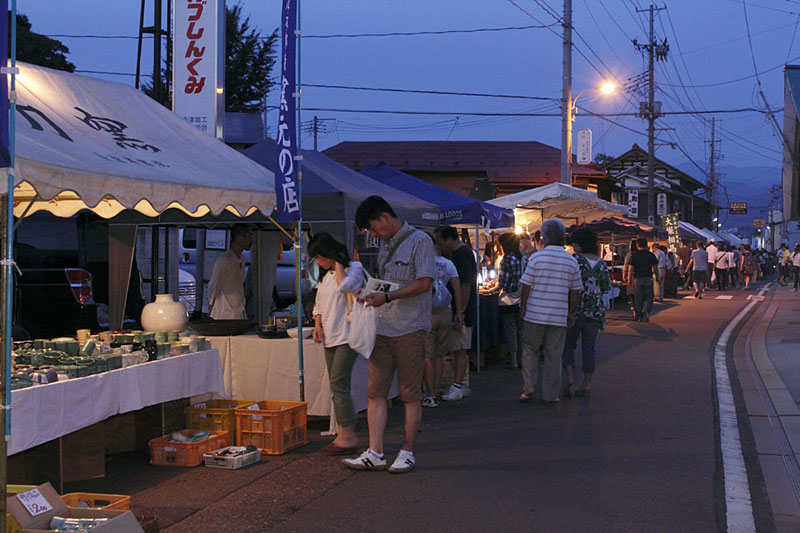
``Aizu Hongo Setoichi'' is held once a year on the first Sunday of August, and about 100 street vendors selling pottery, mainly ``Aizu Hongo ware'', set up shop on Setomachi Street, where many potteries are located. Arrange. The store opens around 4 a.m., and while it's still dark, people with flashlights in hand looking for bargains fill the streets that retain the atmosphere of the past, a typical summer feature of Aizu-Hongo. *2022 event has been canceled due to the influence of the new coronavirus. For information after 2023, please inquire.
Aizu Hongo Seto City<Information>
- Name: Aizu Hongo Seto City
- Address: Around Setomachi-dori, Aizumisato-cho, Fukushima Prefecture
- Contact: Aizu Hongo Ware Business Cooperative Association
- Phone number: 0242-56-3007
Google Map
Make your own ceramics with “Aizu Hongo-yaki”
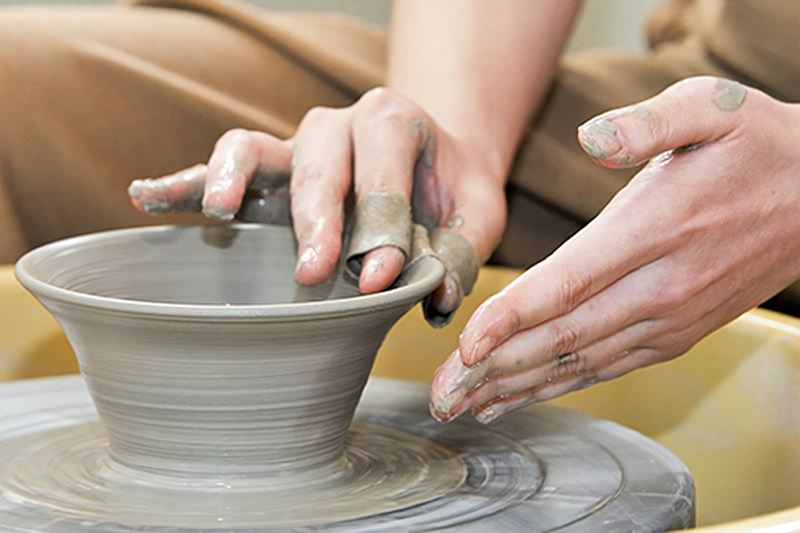
At ``Aizu Hongo Yaki,'' you can try your hand at making pottery at 8 of the 12 potteries. The types of experiences you can have, such as painting, hand-building, and potter's wheel work, vary depending on the pottery, and the prices also vary somewhat. Also, there are differences in pottery, porcelain, and materials depending on the pottery, so please contact the Aizu Hongo Ware Business Cooperative Association for details.
The Aizu Hongo ware experience is also a return gift for hometown tax donations.
Aizu Hongo ware pottery experience
- Contact: Aizu Hongo Ware Business Cooperative Association
- Phone number: 0242-56-3007
- URL: Aizu Hongo Yaki Business Cooperative Association Aizu Hongo Yaki Business Cooperative Association
・List of Aizu Hongo-yaki kilns
Tobou Irori
- Address: 1868-1 Kawahara-cho Ko, Aizumisato-cho
- Phone number: 0242-56-5707
- Ceramics experience: Yes (porcelain)
- URL: Satoshi Tobo
Kinoto Kobo
- Address: 3272-1 Seto-cho, Aizumisato-cho
- Phone number: 0242-56-5098
- Ceramics experience: Yes (pottery)
- URL: Kinone Kobo
Soushungama Kobou Sou
- Address: 3175 Seto-cho, Aizumisato-cho
- Phone number: 0242-56-3732
- Ceramics experience: Yes (porcelain)
- Instagram: Soshuru Kiln Kobo Sou
Suigetsugama
- Address: 3174 Seto-cho, Aizumisato-cho
- Phone number: 0242-56-3103
- Ceramics experience: Yes (porcelain)
- URL: Suigetsu Kiln
Kanzan kiln
- Address: 2195 Matsubaragi-ko, Aizumisato-cho
- Phone number: 0242-56-2178
- Ceramics experience: Yes (pottery)
Tomizogama
- Address: 176 Shinmachi, Aizumisato-cho
- Phone number: 0242-56-3033
- Ceramics experience: Yes (porcelain)
- URL: Tomisogama
Toga Touraku
- Address: 3180 Seto-cho, Aizumisato-cho
- Inquiries: 0242-56-5115
- Ceramics experience: Yes (pottery)
- URL: Touga Toraku
Ryumonyaki
- Address: 1933 Kawahara-cho Ko, Aizumisato-cho
- Phone number: 0242-56-2221
- Ceramics experience: Yes (porcelain)
- URL: Ryumonyaki
Houzangama
- Address: 253 Shinmachi, Aizumisato-cho
- Phone number: 0242-56-2851
- Pottery experience: None
Mayumi Munakata
- Address: 1773-17 Kitakou, Kawahara-cho, Aizumisato-cho
- Phone number: 0242-56-2380
- Pottery experience: None
- URL: Mayumi Munakata
Munakata kiln
- Address: 3115 Hongo Kamikou, Aizumisato-cho
- Phone number: 0242-56-2174
- Pottery experience: None
- URL: Munakata Kiln
Kayano kiln
- Address: 1099 Kawahara-cho Ko, Aizumisato-cho
- Pottery experience: None



![[Akita] Enjoy flowers, historical sites, and hot springs at the same time! Yurihonjo City Historic Site “Honjo Park” 01](https://jp.neft.asia/wp-content/uploads/2017/05/01-150x150.png)
![[Fukushima Prefecture] Introducing recommended "experience spots" in summer! Make special memories in Fukushima! 27933988_m](https://jp.neft.asia/wp-content/uploads/2024/07/27933988_m-150x150.jpg)
![A report on the experience of "Whiskey Collection Koriyama," Tohoku's first whiskey event! [Fukushima Prefecture] Whiskey Collection Koriyama](https://jp.neft.asia/wp-content/uploads/2024/10/IMG_0751-EDIT-150x150.jpg)
![The delicacy "Anko" is a delicious winter taste on the beach! [Fukushima Prefecture] Monkfish](https://jp.neft.asia/wp-content/uploads/2022/02/2054097_m-150x150.jpg)
![A tour of the 33 remaining Kannon in Minami Aizu. "Thirty-three Kannon" certified as a Japanese Heritage Site [Fukushima Prefecture] 11_MG_9631](https://jp.neft.asia/wp-content/uploads/2022/11/11_MG_9631-150x150.jpg)
!["Negaseki" is one of the three ancient Oshu sekies that surpasses Minamoto Yoshitsune and Matsuo Basho [Tsuruoka City, Yamagata Prefecture] 3809167_m](https://jp.neft.asia/wp-content/uploads/2023/02/3809167_m-150x150.jpg)
![What is "disc dumplings" in Fukushima City? Introducing recommended shops and history [Fukushima Prefecture] Disc Dumplings 1](https://jp.neft.asia/wp-content/uploads/2023/03/31485117_m-150x150.jpg)
